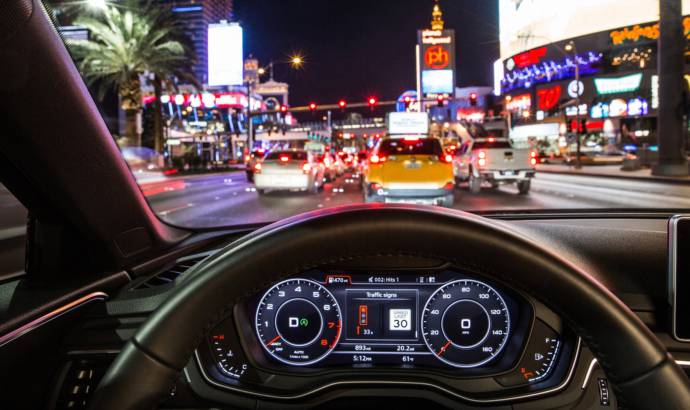Audi is one of the pioneers when it comes to in-car technology. The Ingolstadt-based manufacturer is one of the first to introduce the Traffic Light Information (TLI), which is offered with a subscription to Audi connect PRIME in most Audi vehicles on sale today, and provides a countdown in the instruments of how long a traffic light will remain red before turning green (Time to Green—TTG).
TLI can also offer recommended driving speeds (Green Light Optimized Speed Advisory—GLOSA) to limit the number of red lights hit—which also carries the benefit of helping conserve fuel. Connected to infrastructure as well, using TLI, cities will soon be able to aggregate data to see how long cars are waiting at lights and optimize signal timing for better traffic flow.
Tomorrow’s technologies are designed to enhance TLI with more information and faster signals, adopting 5G-powered cellular vehicle-to-everything (C-V2X) technologies that will be able to send messages near instantaneously to and from other vehicles, school zones and worksites. This future technology has the potential to increase driver confidence on the road by providing warnings—or even having the car take autonomous action—when it senses an impending collision. Audi announced in early 2020 that it has begun collaborating with the Virginia Department of Transportation, communications chipmaker Qualcomm and Virginia Tech on a pilot program around construction sites.
V2I and C-V2X can help power and empower tomorrow’s drivers and vehicles with more information about what’s going on outside the car, keeping drivers informed as a peace-of-mind technology with traffic light information as well as a driver assistance feature to tell drivers about impending road hazards or situations that could cause an accident.
As of today, TTS collects data at more than 20,500 intersections within 96 agencies and cities and 26 major metropolitan areas in the U.S. alone. The data—how, when and why lights change color in their grids—is routed back to TTS’s servers in Portland. TTS create predictions, running calculations of how traffic lights behave in various scenarios, such as when pedestrians push crosswalk buttons or traffic flow at various points during the day. Using data feeds, engineers are able to adjust for and calculate latency out of predictions.
Once engineers are able to ensure algorithms are within 95% accuracy of the data, even accounting for various traffic situations, Audi and TTS turn on traffic signals for customers to see for TLI, TTG and GLOSA in their cars.
Audi vehicles send anonymized data when traffic lights are crossed to a backend, which checks whether the actual crossings of traffic lights correspond to the forecast data. After initial and ongoing quality thresholds are met, the traffic lights are cleared for the display in the car.
The benefit to municipalities for sharing their data is helping improve traffic flow during all hours of the day, future-proofing connected infrastructure and even helping reshape roads based on traffic patterns. TLI can even measure for “split failures”—when you’re at a traffic light and do not make it through in one cycle. Kiel Ova, who is responsible for connecting TTS with municipalities, said data provided back to some cities has helped them alter traffic signal timings to improve traffic flow and create more pedestrian-friendly intersections, which can help cities’ walkability scores.



